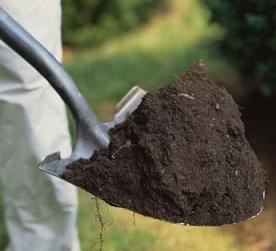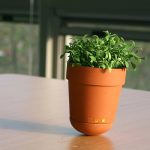 Oxygen, hydrogen, and carbon are the three nutrients (elements) that plants get naturally from the environment.
Oxygen, hydrogen, and carbon are the three nutrients (elements) that plants get naturally from the environment.
Apart from these natural elements, plants also need other essential nutrients for its growth and reproduction.
However, these elements are not readily available for the plant from its soil. This is because the nutrients in the soil do not remain for a longer period.
As each nutrient/element plays a vital role in plant growth, replenish the soil regularly to maintain a good supply of these nutrients to the plant for a healthy growth.
Plant fertilizers are the best means to provide the plants with all its needs so that the plants do well in its growth.
Plant fertilizer is the key ingredient of a healthy and beautiful garden. It improves root development, increases nutrients supply and corrects nutrient deficiency, enhances foliage growth, and adds texture to the soil that helps in plant support.
Plant fertilizers and its types
In order to grow properly, a plant needs the right fertilizer at right amounts. So, prior to buy and use plant fertilizers, understand its types and select the one that meets your plants need as well as easiest for you to use.
Plant fertilizers are classified into two groups: organic and inorganic (chemical). Organic fertilizers are soil amendments that are usually derived from an existing plant or animal.
Wood ash, manure, slurry, seaweed, organic compost, and guano are good examples of organic fertilizers.
These plant fertilizers are more convenient, safe to use and easily available. Moreover, they help improve soil structure, keeps soil moist, supplies nitrogen continuously, enhance existing nutrients in the soil. However, they provide lower concentrations of nutrients.
Chemical fertilizers are primarily derived from various chemical formulations — ammonium nitrate, ammonium phosphates and potassium chloride. Mined rock phosphate, Chilean sodium nitrate and limestone are good examples of inorganic or chemical plant fertilizers.
The high levels of nitrogen in the fertilizers help support the growth of the stem and leaves; the high levels of phosphorous help in healthy root growth and Potassium promote protein development. However, if used improperly, they can harm plants.
Chemical plant fertilizers are usually available in either granular (powder) form or in liquid form. A liquid fertilizer is easy to apply and acts very fastly. Due to its quick absorption, you need to apply for every 2-3 weeks.
As most of these fertilizers are highly concentrated, they need to mix well with water prior to its usage to the plants. A proper dilution can eliminate the possibility of harms and burns to the plant. A liquid fertilizer usually works well for young and sensitive plants.
Granular fertilizers are easy to use and are applied in its dry form where you can sprinkle it on the soil around the plants. Once you apply, water it immediately to keep the plants away from burning.
You can apply these fertilizers by hand or using a mechanical spreader. However, its usage is a bit complicated than liquid fertilizers.
When this type of application spreads handful of fertilizer, it can develop problems such as plant burning, inadequate fertilizer for the plant size. So, make use of a measuring cup for using granular form of fertilizer.








